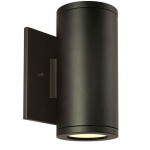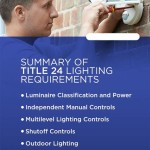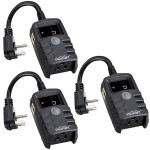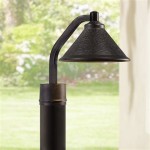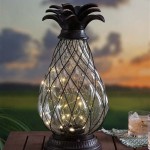Motion Sensor Outdoor Light Fixture: Illumination, Security, and Efficiency
Motion sensor outdoor light fixtures are a common and versatile solution for illuminating properties, enhancing security, and promoting energy efficiency. These fixtures integrate lighting technology with motion detection capabilities, triggering illumination only when movement is detected within a defined range. This functionality offers numerous benefits for residential, commercial, and industrial applications. Understanding the features, benefits, installation, and maintenance of these fixtures is crucial for optimizing their performance and longevity.
The core functionality of a motion sensor outdoor light fixture hinges on the interaction of two primary components: a light source and a motion sensor. Various types of light sources can be integrated, including traditional incandescent bulbs, halogen lamps, compact fluorescent lamps (CFLs), and, increasingly, light-emitting diodes (LEDs). Each light source possesses distinct characteristics concerning energy consumption, lifespan, and light output. The motion sensor, typically employing either passive infrared (PIR) or microwave technology, detects movement within its field of view. PIR sensors detect changes in infrared radiation emitted by warm objects, while microwave sensors emit microwave radiation and detect changes in the reflected signal.
Key Point 1: Benefits of Motion Sensor Outdoor Lighting
The implementation of motion sensor outdoor lighting offers a multitude of advantages, contributing significantly to security, convenience, and cost savings.
Enhanced Security: Motion-activated lights act as a powerful deterrent to potential intruders. The sudden illumination caused by detected movement can effectively startle trespassers and alert residents or neighbors to suspicious activity. By illuminating dark areas around a property, motion sensor lights reduce the risk of break-ins, vandalism, and other security threats. Strategically placed fixtures can illuminate walkways, driveways, entry points, and other vulnerable areas, providing a safer environment for residents and visitors.
Increased Safety: Outdoor lighting plays a critical role in preventing accidents and injuries, especially during nighttime hours. Motion sensor lights improve visibility around a property, reducing the risk of slips, trips, and falls. Illuminated pathways and steps allow individuals to navigate the area safely, even in low-light conditions. This is especially beneficial for elderly individuals, those with mobility issues, or families with young children.
Energy Efficiency: One of the most significant advantages of motion sensor lights is their ability to conserve energy. By only activating when motion is detected, these lights minimize wasted energy consumption. Unlike traditional lights that remain on continuously, motion sensor lights automatically switch off after a pre-determined period of inactivity. This reduces electricity bills and lowers the environmental footprint of the property. The use of LED technology in conjunction with motion sensors further enhances energy savings.
Convenience and Accessibility: Motion sensor lights offer convenience for homeowners and visitors alike. Automatically illuminating walkways and entryways eliminates the need to fumble for keys or navigate in the dark. This is especially helpful when carrying groceries, luggage, or other items. Motion sensor lights also provide a welcoming and safe environment for guests, ensuring they can easily find their way to the entrance of the property.
Extended Bulb Lifespan: By reducing the overall operating hours of the light fixture, motion sensors contribute to the extended lifespan of the light bulb. Constant illumination, typical of traditional outdoor lighting, significantly shortens the lifespan of bulbs, requiring frequent replacements. Motion sensor lights, however, only activate when needed, preserving the bulb's lifespan and reducing maintenance costs.
Key Point 2: Types of Motion Sensors and Lighting Technologies
Understanding the various types of motion sensors and lighting technologies available is essential for selecting the most appropriate fixture for a specific application.
Passive Infrared (PIR) Sensors: PIR sensors detect changes in infrared radiation emitted by warm objects, such as humans, animals, and vehicles. These sensors are highly sensitive and relatively inexpensive, making them a popular choice for residential and commercial applications. PIR sensors are generally effective in detecting movement within a specific range and field of view. However, their performance can be affected by environmental factors like temperature fluctuations, rain, or snow. Adjustments to sensitivity settings may be required to minimize false alarms.
Microwave Sensors: Microwave sensors emit microwave radiation and detect changes in the reflected signal. These sensors are more sensitive than PIR sensors and can detect movement through walls, doors, and other obstacles. This makes them suitable for applications where a wider detection range or penetration is required. However, microwave sensors are also more prone to false alarms caused by wind, rain, or moving objects outside the immediate area. Careful calibration and proper installation are crucial for optimal performance.
Dual Technology Sensors: Dual technology sensors combine both PIR and microwave technology to minimize false alarms and improve detection accuracy. These sensors require both technologies to be triggered before activating the light, reducing the likelihood of activation due to environmental factors. Dual technology sensors are typically more expensive than single-technology sensors but offer enhanced reliability and performance.
Light Emitting Diodes (LEDs): LEDs are rapidly becoming the preferred light source for outdoor lighting due to their energy efficiency, long lifespan, and durability. LEDs consume significantly less energy than traditional incandescent or halogen bulbs, resulting in substantial cost savings over time. They also have a much longer lifespan, reducing the need for frequent replacements. LEDs are available in a variety of color temperatures and brightness levels, allowing for customized lighting solutions. Moreover, LEDs are resistant to vibrations and impact, making them suitable for outdoor environments.
Compact Fluorescent Lamps (CFLs): CFLs offer a more energy-efficient alternative to incandescent bulbs, although they are less efficient than LEDs. CFLs have a longer lifespan than incandescent bulbs but a shorter lifespan than LEDs. They also contain mercury, which requires proper disposal. While CFLs were once a popular choice for energy-efficient lighting, they are gradually being replaced by LEDs due to the latter's superior performance and environmental benefits.
Halogen Lamps: Halogen lamps provide a bright, white light output but are less energy-efficient than CFLs or LEDs. They also have a relatively short lifespan compared to other lighting technologies. Halogen lamps generate a significant amount of heat, which can be a safety concern in certain applications. They are gradually being phased out due to their lower energy efficiency and shorter lifespan compared to LEDs.
Key Point 3: Installation, Adjustment, and Maintenance
Proper installation, adjustment, and maintenance are critical for ensuring the optimal performance and longevity of motion sensor outdoor light fixtures.
Installation Considerations: Prior to installation, it is essential to determine the ideal location for the light fixture. Consider the areas that require illumination, the desired detection range, and the potential for obstructions. Ensure that the fixture is mounted securely to a stable surface, such as a wall, post, or eave. Follow the manufacturer's instructions carefully and consult with a qualified electrician if necessary. Avoid mounting the fixture near heat sources, such as vents or chimneys, as this can trigger false alarms. Ensure proper wiring and grounding to prevent electrical hazards.
Sensitivity Adjustment: Motion sensor sensitivity can be adjusted to optimize performance and minimize false alarms. Most fixtures feature a sensitivity control that allows users to adjust the distance and range of detection. Experiment with different sensitivity settings to find the optimal balance between detection accuracy and false alarm prevention. Higher sensitivity settings will detect movement from farther away, while lower sensitivity settings will require closer proximity. Consider the surrounding environment and adjust the sensitivity accordingly.
Time Adjustment: Motion sensor lights typically feature a time adjustment control that determines how long the light remains on after motion is detected. This setting can be adjusted to conserve energy and prevent unnecessary illumination. Shorter time settings will turn the light off more quickly, while longer time settings will keep the light on for a longer duration. Consider the typical use patterns of the area and adjust the time setting accordingly. For example, a short time setting may be appropriate for a frequently used pathway, while a longer time setting may be suitable for a security-sensitive area.
Range Adjustment: Some motion sensors allow for adjustment of the detection range. This feature is particularly useful for focusing the detection area and minimizing unwanted activations. Adjust the range setting to cover the desired area and avoid detecting movement from adjacent properties or public areas. This can help reduce false alarms and improve the overall performance of the light fixture.
Maintenance Procedures: Regular maintenance is essential for ensuring the proper functioning of motion sensor outdoor light fixtures. Clean the sensor lens periodically to remove dust, dirt, and debris that can interfere with its performance. Check the wiring and connections to ensure they are secure and free from corrosion. Replace bulbs as needed, using the recommended type and wattage. Inspect the fixture for any signs of damage, such as cracks, leaks, or broken components. Repair or replace damaged parts promptly to prevent further damage and ensure safety. It's also advisable to test the fixture periodically to confirm it’s functioning as expected.

Motion Sensor And Dusk To Dawn Decorative Outdoor Lighting Deep Discount

Outdoor Motion Sensor Lights Lamps Plus

Lnc Modern Black Motion Sensing Outdoor Sconce With Seeded Glass Shade Farmhouse 1 Light Front Door Wall Lantern 2 Pack Ev26jrhd1745dg8 The Home Depot

Emliviar Motion Sensor Outdoor Light Dusk To Dawn Modern Outd

Outdoor Porch Light With Gfci For House Dusk To Dawn Motion Sensor Fixture Exterior Work Security Waterproof Anti Rust Wall Lantern Balcony Garage Bulb Not Include Com

Dusk To Dawn Motion Sensor Outdoor Porch Lights With Gfci Waterproof Light Fixture Anti Rust Exterior Wall Mount 3 Modes For House Garage Bulb Not Included Com

Home Decorators Collection 13 In Oil Rubbed Broe Motion Sensor Integrated Led Outdoor Wall Lantern Sconce Jaq1691l 2 The Depot

Galt 11 1 4 High Broe Motion Sensor Outdoor Wall Light 33h87 Lamps Plus

Pin On For The Home

John Timberland Stan Rustic Farmhouse Outdoor Wall Light Fixture Gray Faux Wood Black Motion Sensor 15 1 2 Clear Ribbed Glass For Post Exterior Barn Target
Related Posts
